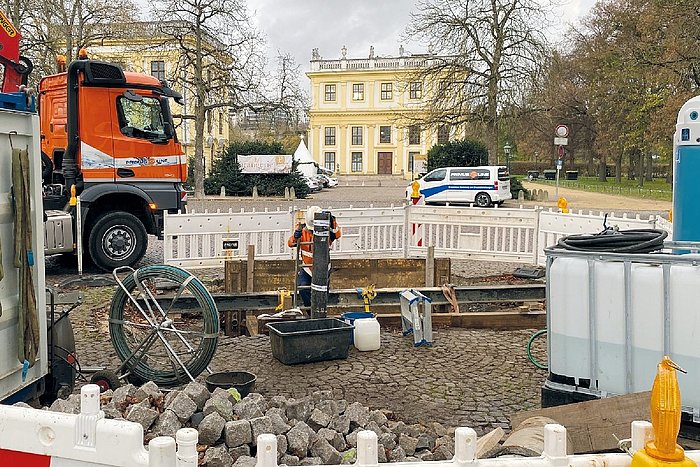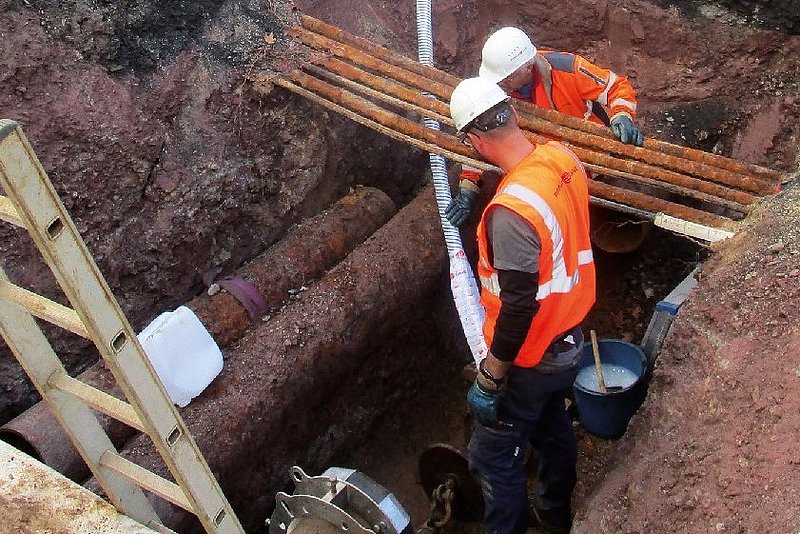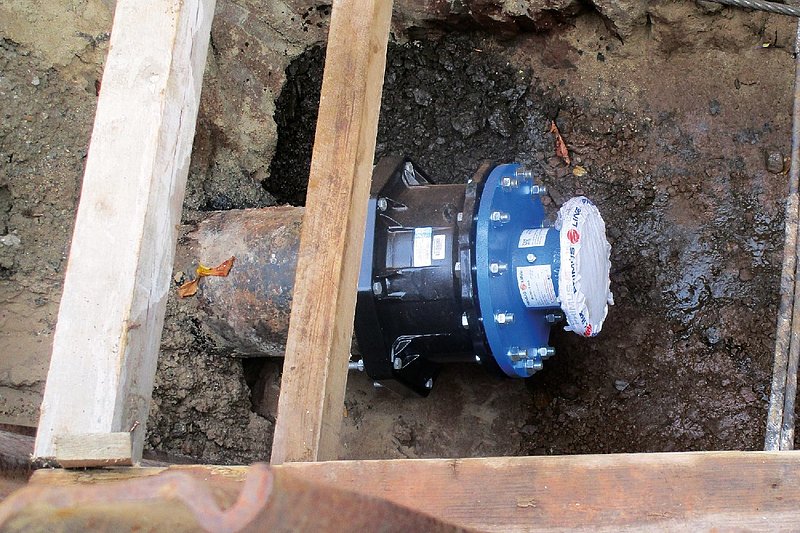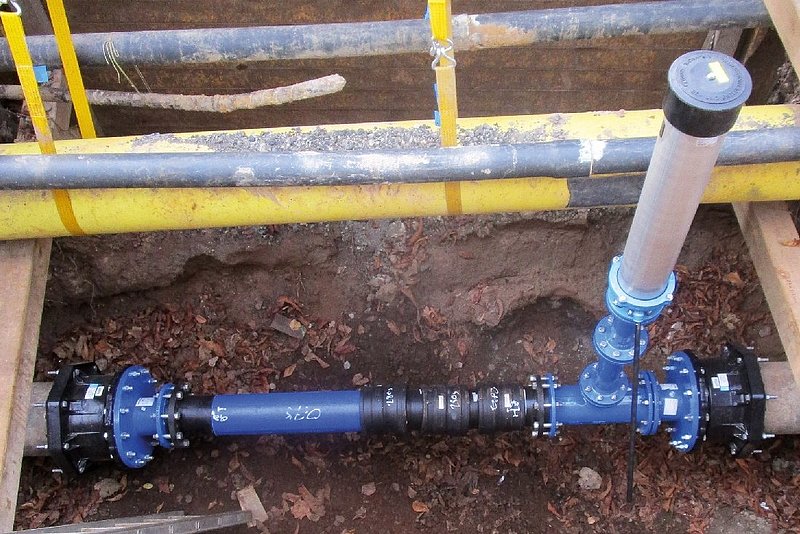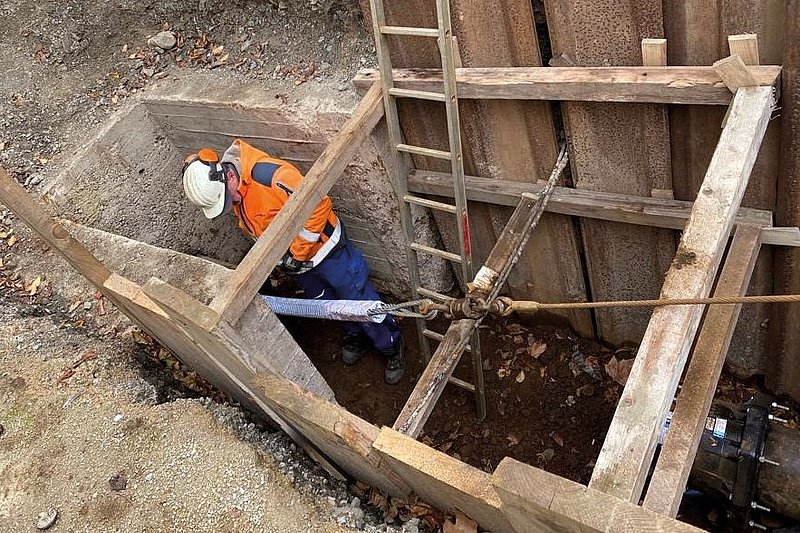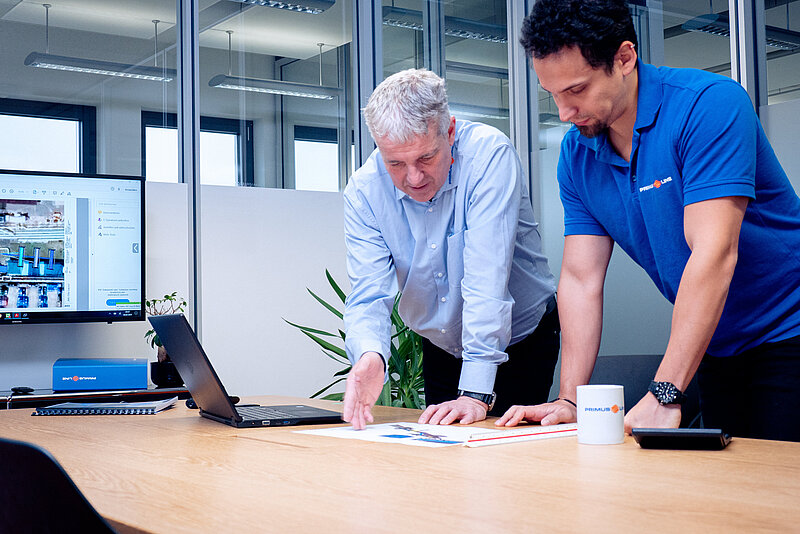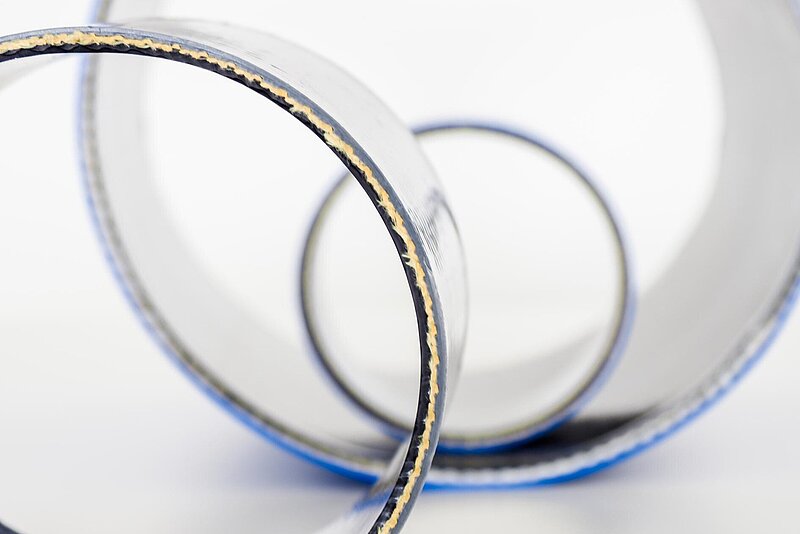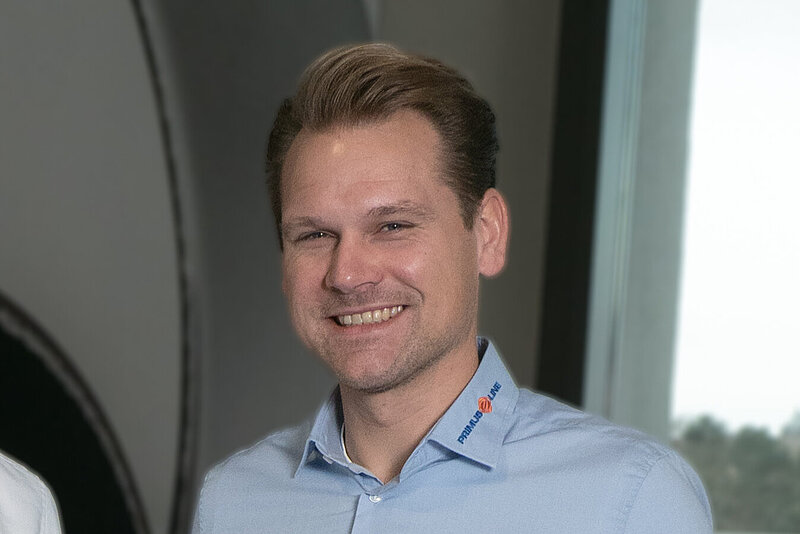The so-called Fulda water pressure pipeline from 1920 had to be rehabilitated due to its structural condition and the intended new use in the city centre. Originally, the pipeline was used to supply water to steam locomotives at the main railway station and to supply service water to a Deutsche Bahn repair plant. For this purpose, the water was taken from the river Fulda and transported to the railway station by means of pumps via an approximately 1.5-kilometre-long pressure pipe. The route of the pipeline begins behind the historic Orangerie in the Fulda meadows, crosses the landscape conservation area created after the 1981 German Federal Garden Show, continues across the documenta site and finally for several hundred metres across the pedestrian zone of the city centre to the main railway station.
The new utilisation concept envisages the construction of a cistern in the city centre. In the future, KASSELWASSER, as the operator of the sewer network, will be able to draw water from it for cleaning purposes. The same applies to the environment and garden department for watering the trees and green spaces in the city centre. For this, the water is to be pumped from the Fulda into the cistern with about twelve cubic metres in size within 30 minutes by means of an electronic circuit. The difference in height between the Fulda and the location of the planned cistern is about 27 metres. In the first construction phase in 2022, KASSELWASSER first rehabilitated around 750 metres of pipelines. The construction of the cistern will follow in the second construction phase in 2023.
